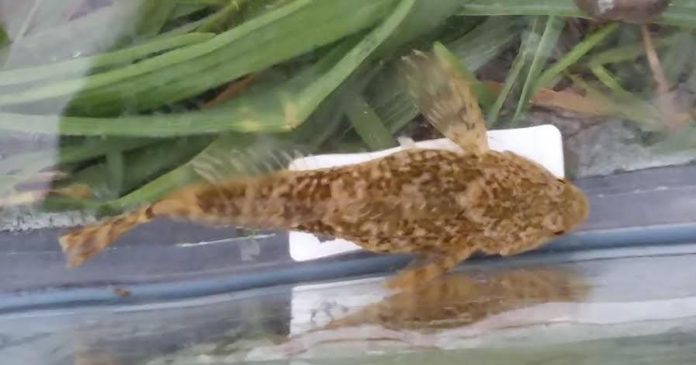Editor’s Note: This is a column on area watersheds by Blyden Potts and guest columnists to spread awareness of the area’s tributaries and the efforts of area volunteers to keep them clean.
When we have fish in aquarium exhibits for kids, brook trout get the star billing, but the most unexpectedly popular of the supporting cast are the freshwater Sculpins, genus Cottus. There are over 60 recognized species in the genus, of which at least 20 live in North America, and at least four in south-central Pennsylvania.
Much of the attraction of Sculpins is their curious shape. Stereotypical “fish shape” is a convex lens, or sideways teardrop, with a tailfin at one end, dorsal fin on the top, and some fins along the bottom. Typical fish eyes are set back from the front of the fish, and look to each side. Sculpins defy the stereotype. They have squat, stubby conical bodies, with oversized heads, and disproportionately large pectoral fins, which are often held out at a large angle from their bodies, almost like small wings. Their eyes are set forward and near the top of their head, which combined with their short bodies and large head, gives them a frog-like countenance.
Unlike the dazzling bright colors of trout or sunfish, Sculpins have muted, patchy, brownish coloring. This trait has tended to result in some not-very-attractive names for Sculpin species. Mottled Sculpin and Slimy Sculpin are two species in our region. In other areas you may find the Banded, Margined, Marbled, Pit and Prickly Sculpins. Other Sculpins are named for their geographic range, such as the Blue Ridge and Potomac Sculpins, the other two species in our region.
The number of species is still growing as scientists discover some of the populations they thought were one species, because they look very similar, are genetically distinct populations. Sculpin populations are geographically dispersed. Some species have very limited geographic range. The Blue Ridge Sculpin, only recognized as a distinct species within the past 30 years, is only found in streams on the eastern side of the Appalachians from North Carolina to Pennsylvania. The Potomac Sculpin is found only in the Potomac River watershed, James River watershed in Virginia, and a few smaller watersheds in northern Virginia.
None of these are large fish. Mottled Sculpins and Potomac Sculpins grow about 6 inches long, Slimy Sculpins about 5 inches, and Blue Ridge Sculpins grow to less than 3 inches in length. They are a very nice size for a large trout or other predatory fish to have as a snack. Sculpin patterns exist in the arsenal of common fly fishing flies.
Sculpins are generally found on the stream bottom, often hidden among the leaf litter, stones or aquatic vegetation, where their mottled coloration provides excellent camouflage. They eat a variety of aquatic macroinvertebrates found in leaf litter and along the streambed, but the bulk of their diet consists of aquatic insects. Larger sculpins sometimes also eat tiny fish.
It was only when I started using a kick net to find aquatic macroinvertebrates in the leaf litter that I encountered or gave much thought to Sculpins. Before that, I never had reason to pay attention. No one is catching Sculpins for sport or dinner. They are not a species anyone is likely to build an environmental campaign around. They do not project as highly lovable. They are not flashy and attention-getting. Quite the opposite. Sculpins want to lay low and be inconspicuous, which makes it somewhat ironic that when we do notice them, they turn out to be such atypical and interesting fish.
Credit: Source link































